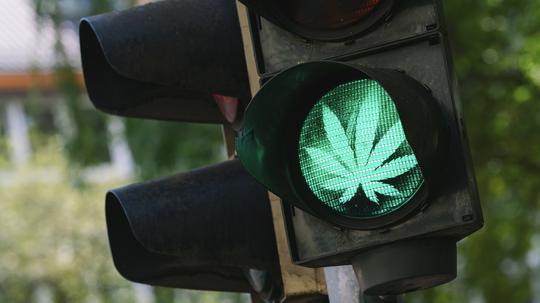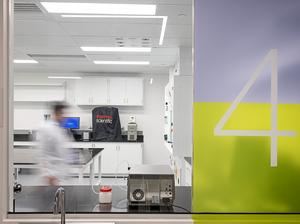
When police officers pull over drunk drivers on the side of the road, they administer a set of tests: a breathalyzer, a blood alcohol test or an order to recite the alphabet backwards, for example.
In 2016, Denise Valenti realized no such test exists for drivers impaired by marijuana use.
“I met way too many parents who didn't need to lose their children because somebody consciously made a decision to get behind the wheel when they were impaired by marijuana,” said Valenti, a certified optometrist. “So we're pretty committed to helping law enforcement and public health finally solve that problem.”
Her device, named IMMAD for "Impairment Measurement Marijuana and Driving," identifies intoxicated drivers by testing their visual deficiencies. After consuming cannabis, drivers suffer from loss of peripheral vision and cannot see the complete range of light frequencies they would while sober.
Using a virtual reality headset, Valenti’s test flashes grayscale stripes of different frequencies around a small black dot. When users see a stripe, they simply click a Bluetooth button given to them. A smartphone wired to the device records subjects’ responses.
The result is predictable: impaired drivers do not pick up on all the stripes a sober driver would.
“Marijuana causes temporary paralysis of the cell operating in the retina. So when you have certain neurologic deficit in your retina, you just can't see the stripes,” Valenti said. “If you can’t see, you can’t drive.”
Patented in July, IMMAD records both which stripes subjects see and how quickly they see them in a two-minute process.
Valenti worked with Marc Pomplun, a University of Massachusetts Boston professor with visual acuity research experience, and a handful of computer science students to assemble IMMAD’s software. After securing funding from the National Institutes of Health a year ago, the team tinkered with the stripes’ width and frequencies. The major hardware—a Samsung HMD VR headset—already existed.
Thirty-four states and the District of Columbia allow the use of medical or recreational marijuana today. The rise in marijuana-related driving violations mirrors the spread of legalization. For example, Washington, Oregon and Colorado all saw a 6 percent increase in car accidents after legalizing cannabis compared to neighboring states, according to a 2018 study from the Highway Loss Data Institute.
“Now that we have the legalization of cannabis products, here in Massachusetts and in other states, I think it is becoming more important to be able to assess intoxication, especially for driving where it can be about life and death,” said Pomplun.
The goal is to get the technology in the hands of law enforcement.
Valenti said she “would like every single officer to have a device.” For this reason, the team prioritized the size, weight and convenience of its product.
Two summers ago, IMMAD worked with Colorado GreenLabs, a Denver-based applied science facility and law enforcement group, to conduct research on high subjects and gather information on their abilities before constructing the device.
But IMMAD must undergo additional testing and research, proven difficult by a lengthy set of legal barriers, and get approval from the court system and the Food and Drug Administration before the device can be put in the hands of officers. Under Massachusetts law, researchers cannot get subjects high for scientific testing.
This isn’t Valenti’s first time exploring the intersection of health science and marijuana. Between stints as an adjunct professor at Boston-area colleges, she researched the role cannabis could play in treating neurodegenerative diseases like Alzheimer's disease and Parkinson’s disease for years.
Her history in optometry infiltrated her plans for IMMAD's future. For the upcoming prototype update, Valenti and her team plan to add eye-tracking technology that trails drivers’ visual movements while wearing the headset. This way, researchers can pinpoint regular cannabis users and drivers who got high via dabbing devices. These users tend to present more sporadic and unstable eye movements.
The band of software engineers, under Pomplun, is also continually adding parameters to refine the tests’ accuracy.
“We have to make sure [IMMAD] is actually sensitive to a degree,” Pomplun said. “It has to be specific enough so that it only responds to marijuana and nothing else.”
Down the line, IMMAD could serve as the first and only avenue to reliably assess drivers’ fitness after marijuana consumption on the road. Valenti wants the devices' findings to hold up in court.
With the growing popularity of virtual reality technology, the team predicts the price of the device will dwindle in the coming years, making it even more accessible to authorities nationwide.
“We know we have a ways to go. But we are slowly moving forward,” said Valenti. “This is just the first generation of the prototype. Just imagine what this technology can do.”
IMMAD is one of BostInno's 50 on Fire 2019. Meet IMMAD and the rest of the Winners November 7 at our Annual 50 on Fire event at Artist for Humanity. Grab your tickets here.








